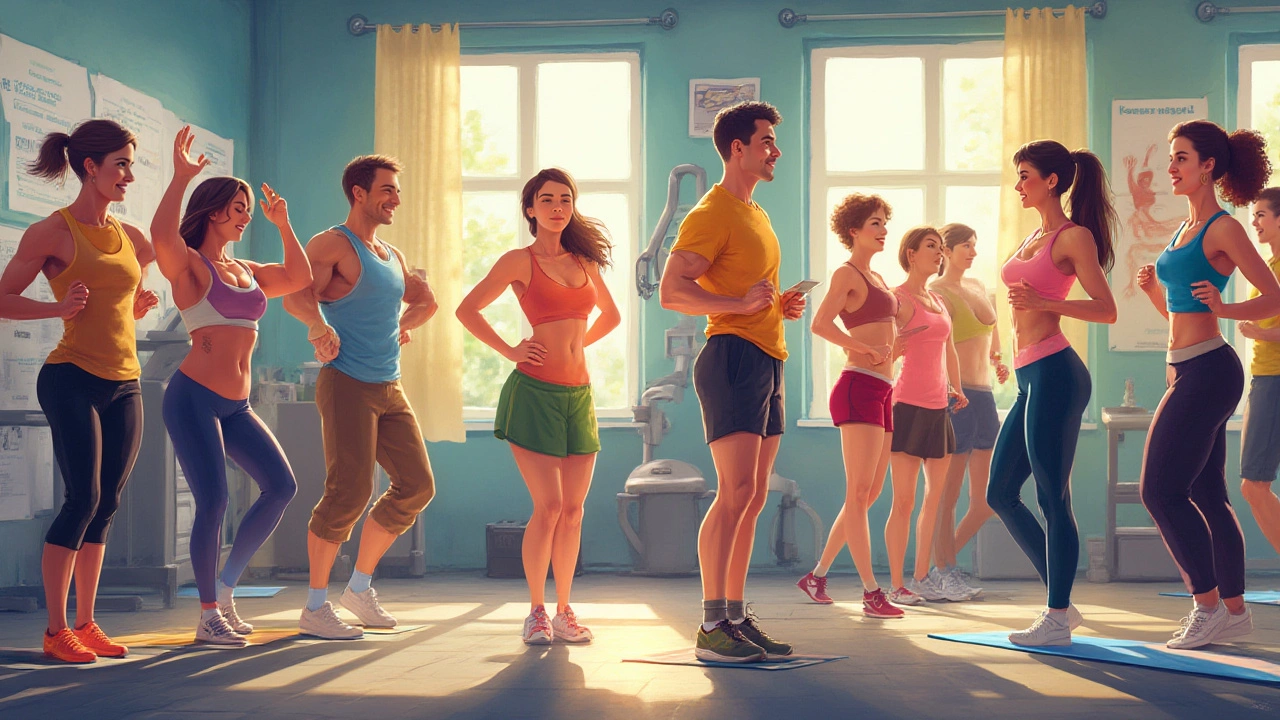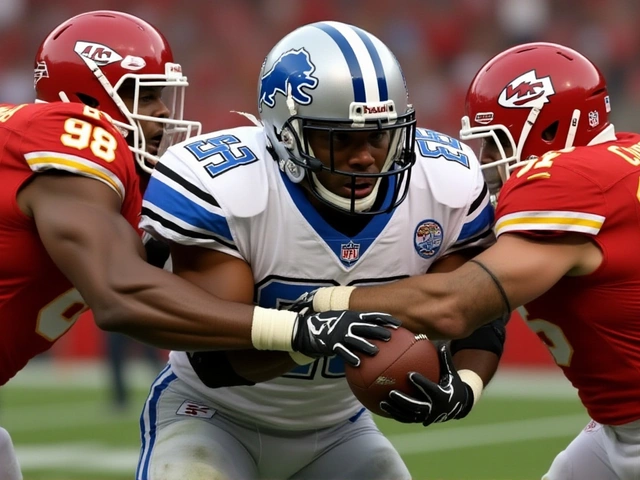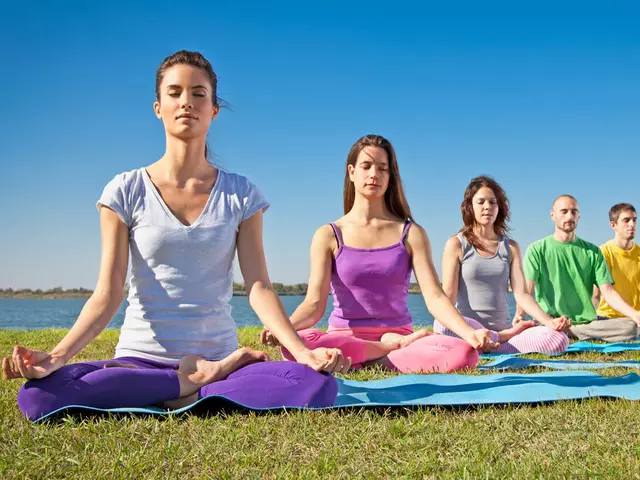If you think fitness is just about sweat and sore muscles, you’re missing the wild, unexpected story underneath the gym selfies and hashtag goals. The truth? Fitness isn’t a finish line, it’s the gritty, sometimes annoying, sometimes wildly satisfying process of moving better, feeling stronger, and actually wanting to do stuff with your own body. Forget the airbrushed promises. The real gym is full of messy hair, awkward stretches, and small victories you probably won’t share online—but should totally celebrate anyway.
Why Fitness Matters More Than Just Looks
It’s tempting to link fitness to looking great in photos, but let’s get real—what you see on Instagram is only half the story. The invisible perks are the real game-changers. Did you know that people who move at least 150 minutes per week—just thirty minutes a day, five days a week—cut their risk of early death by over 30% compared to couch potatoes? That’s not hype; that’s from the CDC. It’s not just about living longer, though. Fitness helps your brain in ways you can actually feel. Regular moderate activity has been shown to help memory, fight off anxiety, and sharpen focus even in stressful times (that’s from a Harvard Health Publishing summary in mid-2024—super fresh!). The mental health link is strong enough that some therapists prescribe fitness as part of their toolkit for treating mild depression and anxiety.
Your heart, joints, and guts all love a regular sweat, too. After just two to four weeks of consistent movement, your cells literally process oxygen better—think: more energy and less of that post-lunch sluggishness. The effect? Lower blood pressure, improved gut health, better sleep. Studies tracking adults over decades found that folks who moved regularly fought off illnesses (including those nasty respiratory bugs) and bounced back from setbacks quicker than their less-active friends. In 2024, an Australian study even linked regular total-body activity to better immune markers after the age of 55, so it’s not just a young person’s game.
There’s also that weird self-esteem boost nobody talks about. Completing a tough session—whether it’s a walk, dance class, or deadlift PR—carries over into regular life. You remember that time you showed up when you really wanted to bail, and it reminds you what you’re capable of next time you’re tempted to sleep through your alarm or ghost that social event. That confident feeling? Totally earned, no filter needed.
And get this—fitness isn’t about crushing yourself every day. The World Health Organization and dozens of international medical groups agree: the biggest gains come from simply going from "not moving" to "moving sometimes." If you’re allergic to running, hate burpees, or never want to see a treadmill again, that’s fine! Finding something you genuinely tolerate (or, gasp, like) is what keeps you coming back. Consistency beats perfection every time.
Breaking the Barriers: Getting Started and Sticking With It
You don’t need a six-pack or a fancy smartwatch to start. That’s actually what keeps a ton of people on the sidelines—thinking they need to overhaul their whole life to “be fit.” The science says otherwise. The British Journal of Sports Medicine published a huge review last year summarizing almost 400 studies: all types of movement help, but the best outcomes come from whatever you’ll actually do, not the "gold standard" you see in glossy ads. Walking, cycling, home yoga videos, old-school calisthenics, raking leaves—if your heart rate goes up and you get a little breathless, you’re on the right track.
The trick is to cut friction. Lay out your workout clothes the night before; schedule a ten-minute walk between meetings; use a standing desk and bounce your knees. Some people swear by group classes, others need solo playlists. Make it social if you like, or retreat into your headphones—this is your time. If early mornings sound like torture, fit in workouts after work or on weekends. The whole "no excuses" mantra is honestly toxic; real life gets messy, kids get sick, work runs late. Missing a session doesn't undo the good work already done, so don’t shame spiral—just pick up where you left off.
Another barrier? All-or-nothing thinking. That “if I can’t do sixty minutes, why bother?” lie. Research from the American College of Sports Medicine, published back in April 2025, proved that three bouts of ten-minute movement deliver similar benefits to one half-hour block. So if all you’ve got is ten minutes, don’t write it off. Sneaky movement counts, too—climbing stairs, vigorous house cleaning, playing with pets.
Be careful with comparison. Not every body responds the same way to workouts, and genetics play a bigger part than we all wish. Your cousin might shed pounds after one hike while you just get hungrier—that’s normal. The key is tuning in to YOUR wins: better sleep, better mood, more stamina for daily life.
Tracking helps, but don’t get obsessive. Some people love filling in their calendars or racking up steps on their smart devices; others get discouraged when "numbers don't match effort." Use tracking only if it motivates you—not if it turns movement into a guilt trip.

Finding the Routine That Works for You
Routines are everywhere, but do they work for you? You might love structure, or you might roll your eyes at having another thing to check off. The real move is mixing up structure with flexibility. For people who get bored fast or travel a lot, create a menu of options: a set of short routines for home, longer sessions for gym days, and fun "wildcard" activities for weekends (like urban hikes, roller skating, salsa dancing, or swimming laps at the local pool).
Here’s a super practical sample weekly menu, straight out of a Stanford wellness counselor’s playbook from early 2025:
- 2-3 cardio bursts: Anything that gets your heart rate up and keeps you moving for at least 20-30 minutes (walk, bike, aerobics class, brisk hiking).
- 2 strength sessions: Think squats, push-ups, resistance bands, or weights. Even twenty minutes makes a difference for bone health and metabolism.
- 1-2 mobility/flexibility sessions: Yoga, Pilates, or dynamic stretching. Great for balance, posture, and keeping you moving pain-free.
- 1 “play” day: Try something new or silly like karaoke dancing, frisbee with friends, hiking with a dog, or martial arts. Science says fun keeps you motivated.
Mix and match based on your goals, soreness, and what your week looks like. None of this requires a gym membership. YouTube is packed with free sessions led by pros, and new apps like FitOn and Nike Training Club are completely free—and way less intimidating than showing up in person if you’re shy.
Fueling up matters, too. No, you don’t need a fancy powder or strict diet, but hydration, protein, and carbs before and after sessions help muscles recover and beat fatigue. A surprising stat: The American Journal of Clinical Nutrition found, in a July 2024 study, that people who ate a high-protein breakfast within ninety minutes of getting up had lower rates of workout-related injuries, possibly due to better muscle readiness. It doesn’t have to be chicken – Greek yogurt, nut butter toast, or eggs do the trick.
And don’t sleep on sleep. If you’re not getting seven hours most nights, your body can’t repair the muscle tears that make you stronger. Studies show sleep-deprived athletes are more likely to get sick, crave unhealthy foods, and lose motivation. Think of rest as part of your routine, not a cheat. Try winding down with gentle stretching or guided meditation if falling asleep is tough for you.
Check your progress in ways that matter—sure, use the scale if you must, but prioritize how you feel, what you can do, and whether movement is feeling more natural. Here’s a quick table summarizing overlooked signals that you’re getting fitter (straight from Johns Hopkins data, Spring 2025):
| Signal | What to Look For |
|---|---|
| Shorter Recovery | Your heart rate returns to normal faster after activity |
| Stairs Feel Easier | Climbing stairs or walking briskly isn’t as exhausting |
| Sleep Quality | Falling asleep faster, fewer wakeups at night |
| Mood Stability | Better moods, less stress and everyday anxiety |
| Everyday Stamina | Grocery bags, yard work, and errands feel lighter |
Dealing with Setbacks, Staying Motivated, and Making It Fun
Setbacks happen. Injuries, sick days, yearly colds, or just crushing work deadlines. The key isn’t to avoid setbacks—that’s impossible. The trick is figuring out your reset plan, so a lost week doesn’t become a lost year. If you tweak your ankle or feel burnout, swap in what you *can* do—upper body strength if you can’t run, mini walks if you’re tired, or even just a few minutes of stretching or breathing exercises. A Stanford study from March 2025 showed that people who adapted instead of quitting after a setback were twice as likely to stick with a routine twelve months later.
Celebrate all wins, not just the headline ones. Finished a walk in the pouring rain? Held a plank for one extra breath? Survived your first embarrassing dance class? Your future self will thank you for hanging in. Tracking these wins (privately or publicly) rewires your brain to look for progress, not perfection.
Motivation is unreliable, so beat it by lowering the startup cost. If the gym feels intimidating, skip the commute and do a living room workout with a favorite playlist. If you’re losing interest, try something new—adults who “exercise for joy” (think skateboarding, rowing class, backyard soccer with kids) stick with movement over twice as long as those who stick with programs they don’t really like. Habit stacking (tacking a short workout onto another daily routine, like brushing teeth or having coffee) helps exercise slide into your day without drama. Apps and digital rewards work for some—others need a buddy or a coach. Know thyself, and plan accordingly.
Fitness should be flexible, not a jail sentence. If your body or schedule changes, adapt—don't bail. You might swap running for cycling if your knees protest; trade HIIT for daily stretching if you’re in recovery. More people are learning to set “compassionate goals” instead of big resolutions—aim for being active this week, not running a marathon next year. Science backs this approach, with the National Institute for Health reporting in mid-2025 that people who focus on enjoyable, immediate goals are far more likely to keep moving long-term.
And finally: sneak in more fun. Music, podcasts, audiobooks, and friends make time fly. Gamify your activity with phone apps that turn walks into virtual races or scavenger hunts. Or tie rewards to consistency—like “if I move for fifteen minutes, I get to watch my favorite show guilt-free.” Your inner child is more persuasive than your inner drill sergeant, so listen to her.
That’s the real fitness game: not perfection, not pain, but progress you can stick with and a life you actually want to live in your own skin. You’ll move better, feel stronger, and—most importantly—show up to whatever comes next, ready for it.





